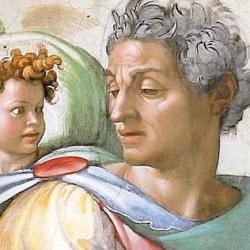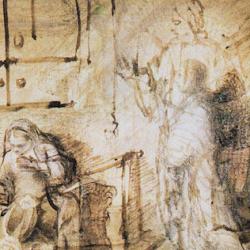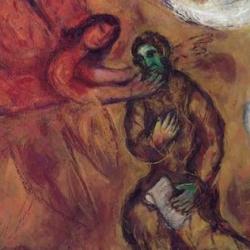David Dorsey offers these neat contrasts between the king of Babylon in Isaiah 14 and Yahweh’s Suffering Davidic servant in the latter part of Isaiah:
The king of Babylon smites ( nakah ), 14:6; the Servant is smitten ( nakah ), 53:4-5, 10.
The king of Babylon slays and oppresses ( nagash ), 14:2, 4, 10; the Servant is oppressed ( nagash ), 53:7-8.
The king of Babylon shakes the earth and boasts, 14:13-14, 16; the Servant is humble, quiet, almost imperceptible, 53:7.
The king of Babylon is wicked, pompous, feared, 14:5, 11, 16; the Servant is righteous and despised, 53:2-3.
The king of Babylon exalts himself and falls; the Servant humbles himself and exalted, 49:2-6.
The king of Babylon dies and his life is over, 14:18-20; the Servant dies, yet prolongs his days, 53:10-12.
The king of Babylon’s seed cut off and not named, 14:20-22; the Servant is cut off, but sees seed, 53:8-10.
The king of Babylon is buried in tomb, 14:18-20; the Servant is given a tomb, 53:9.
Kings see the king of Babylon in Sheol and are startled at his fall, 14:9-11; kings see the Servant and are startled at his exaltation, 52:14-15.
Kings “arise” in Sheol to greet the king of Babylon, 14:9-20; kings arise before the Servant to bow to him, 49:7.










